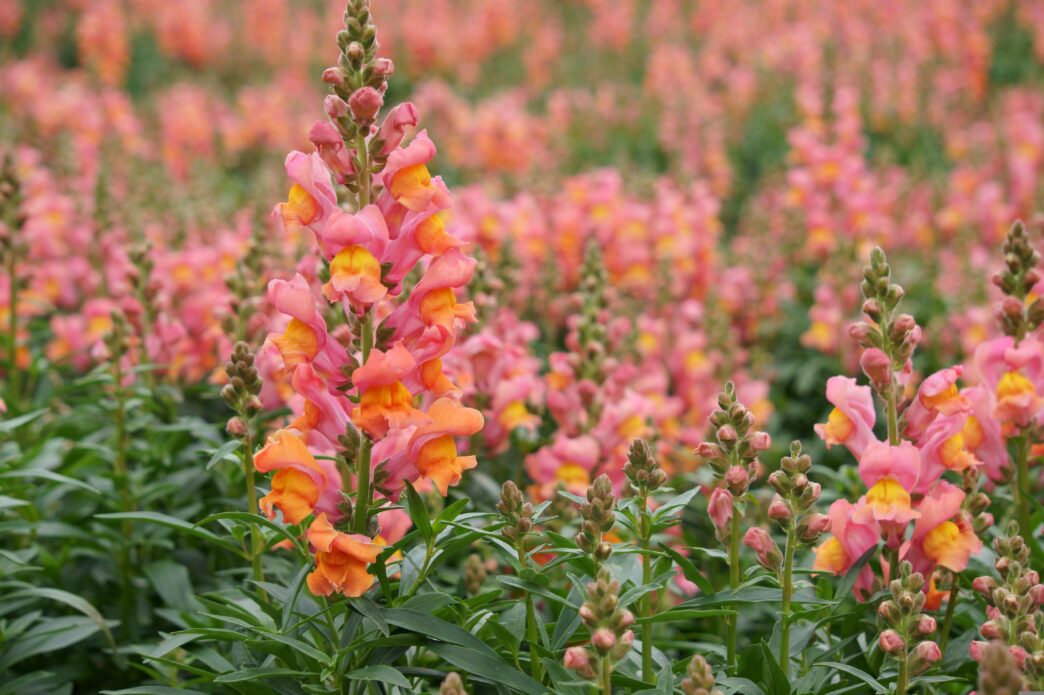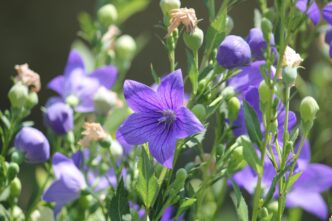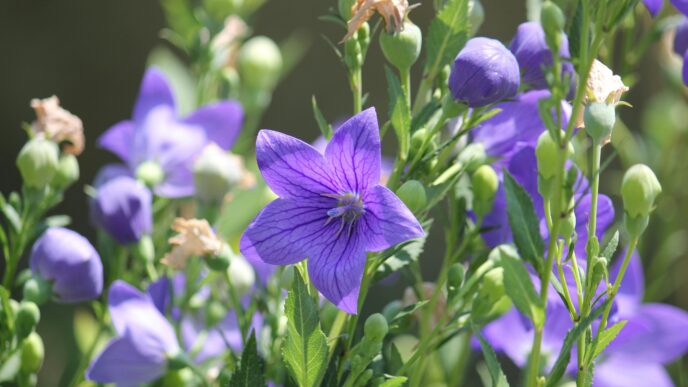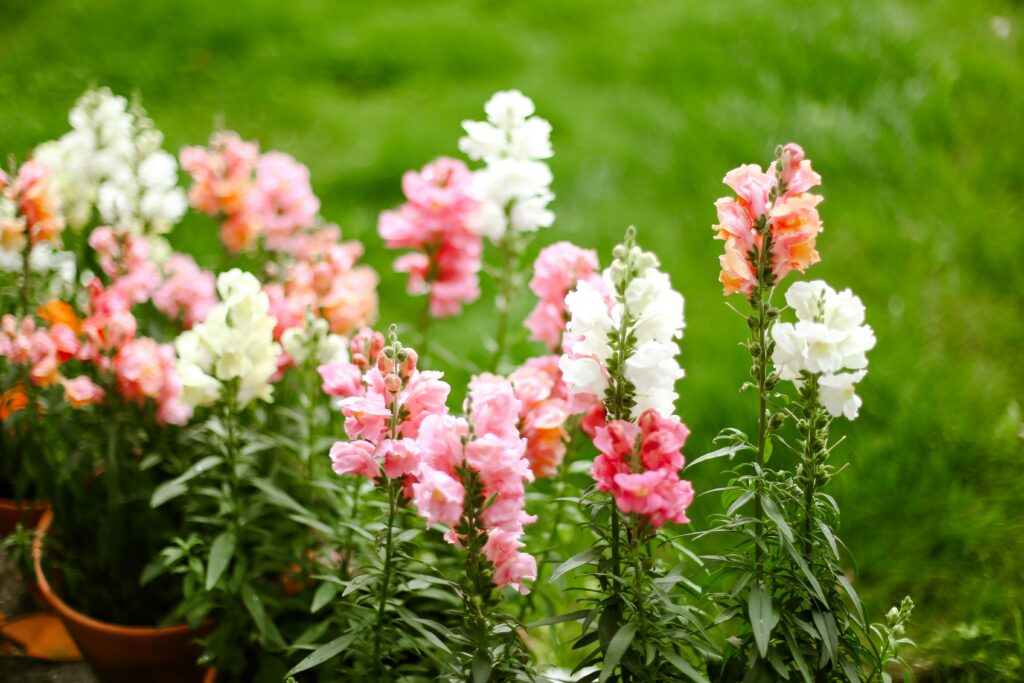
With their cheerful spikes of blooms and whimsical dragon-shaped petals, snapdragons (Antirrhinum majus) are among the most beloved cottage garden flowers. Their name comes from the way the flower “mouth” opens and closes when gently pinched, resembling a playful dragon’s jaw. Available in a rainbow of colors—soft pastels, fiery reds, sunny yellows, and even bicolors—snapdragons add a vertical flourish to flower beds, borders, and containers.
Whether you’re a beginner or an experienced gardener, snapdragons are a joy to grow. Hardy, versatile, and long-blooming, they’re the perfect addition if you want to brighten your garden from spring through fall. Let’s explore how to grow and care for these charming blooms in detail.
Why Grow Snapdragons? 🌸
Snapdragons aren’t just beautiful; they’re practical and rewarding too.
- Versatile growers: Thrive in both garden beds and containers.
- Long bloom time: Flower from cool spring days through early summer, and again in fall.
- Pollinator magnets: Bees love the nectar-rich blossoms.
- Rich color palette: Available in nearly every shade except true blue.
- Symbolic meaning: Represent grace, strength, and resilience—qualities reflected in their ability to withstand cool weather.
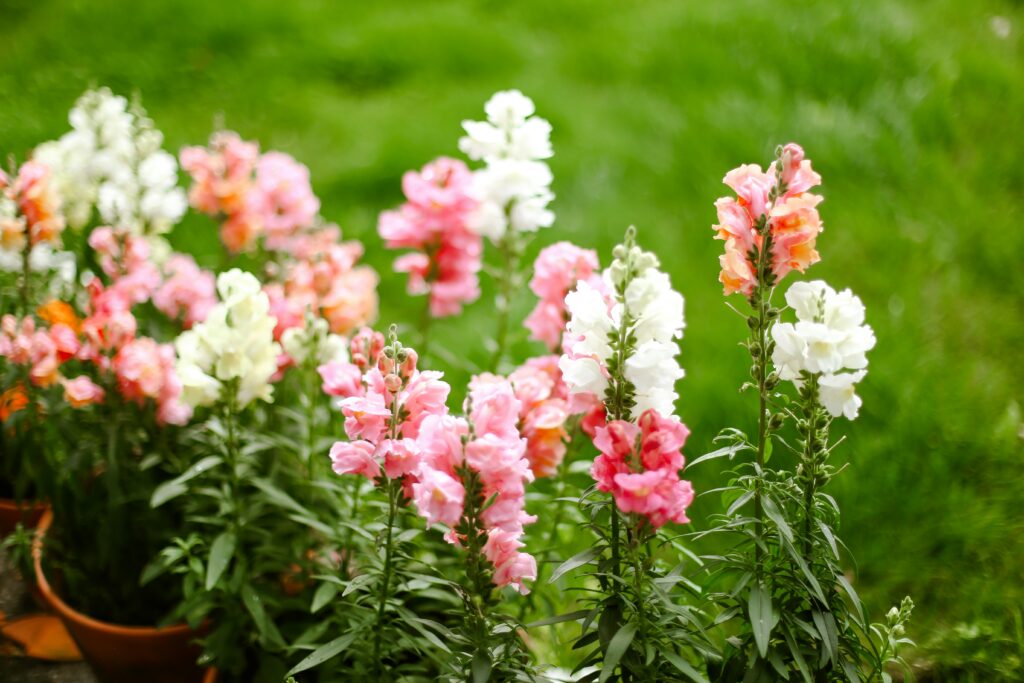
Ideal Growing Conditions 🌱
Sunlight
- Snapdragons prefer full sun (6+ hours daily).
- In very hot climates, they benefit from partial afternoon shade.
Soil
- Well-draining soil is crucial to avoid root rot.
- Soil should be moderately fertile and rich in organic matter.
- pH: 6.2–7.0.
Water
- Water regularly to keep the soil consistently moist, especially during dry spells.
- Avoid waterlogging, which leads to fungal issues.
Climate
- Snapdragons are cool-season flowers.
- Best grown in spring and fall, as they dislike extreme summer heat.
- Hardy in USDA zones 7–11 as short-lived perennials, often grown as annuals in cooler areas.
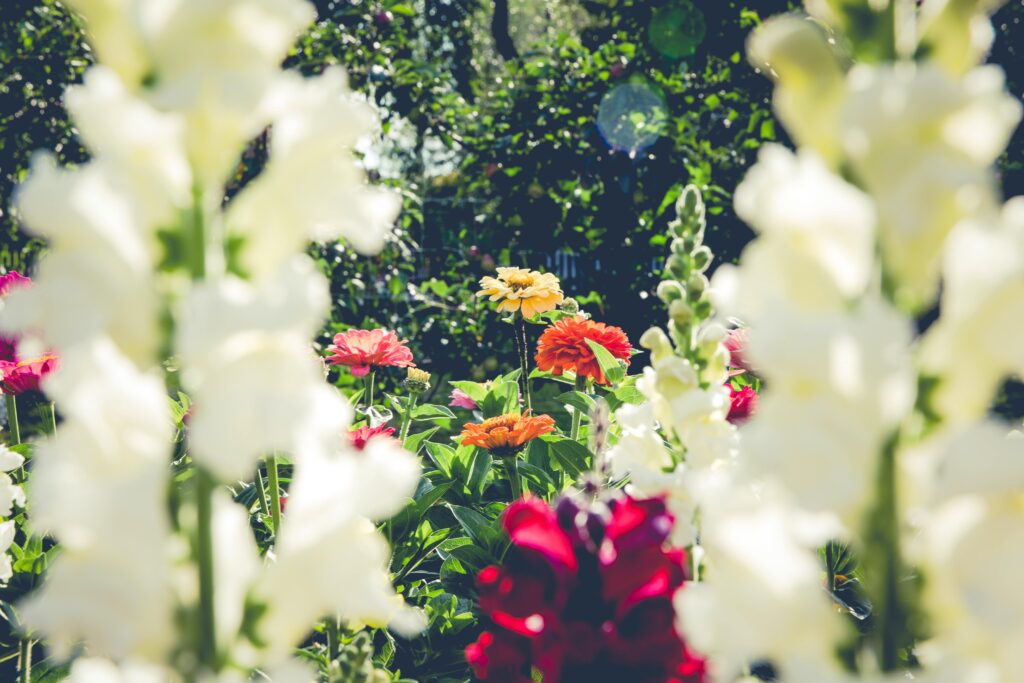
Varieties of Snapdragons 🌼
- Tall Varieties (24–36 inches): Best for garden beds and cutting gardens. Examples: ‘Rocket’, ‘Madame Butterfly’.
- Medium Varieties (12–24 inches): Great for borders and containers. Examples: ‘Sonnet’, ‘Liberty Classic’.
- Dwarf Varieties (6–12 inches): Perfect for edging, window boxes, or small pots. Examples: ‘Floral Carpet’, ‘Montego’.
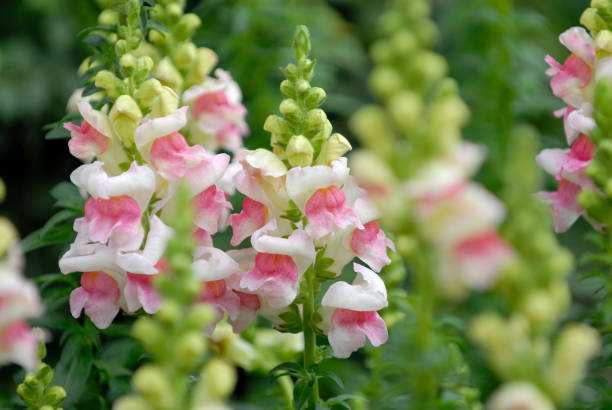
How to Plant Snapdragons 🌿
From Seeds
- Start seeds indoors 8–10 weeks before the last frost.
- Sprinkle seeds on the surface of seed-starting mix—they need light to germinate.
- Mist gently and cover with a clear lid to retain humidity.
- Seeds germinate in 10–21 days at 60–70°F (15–21°C).
- Transplant seedlings outdoors once the soil is workable and frost danger has passed.
Direct Sowing
- In mild climates, sow seeds outdoors in early spring or fall.
- Thin seedlings to 6–12 inches apart, depending on variety.
Transplants
- Nurseries often sell young snapdragon plants ready to plant.
- Space plants to allow good airflow and prevent disease.
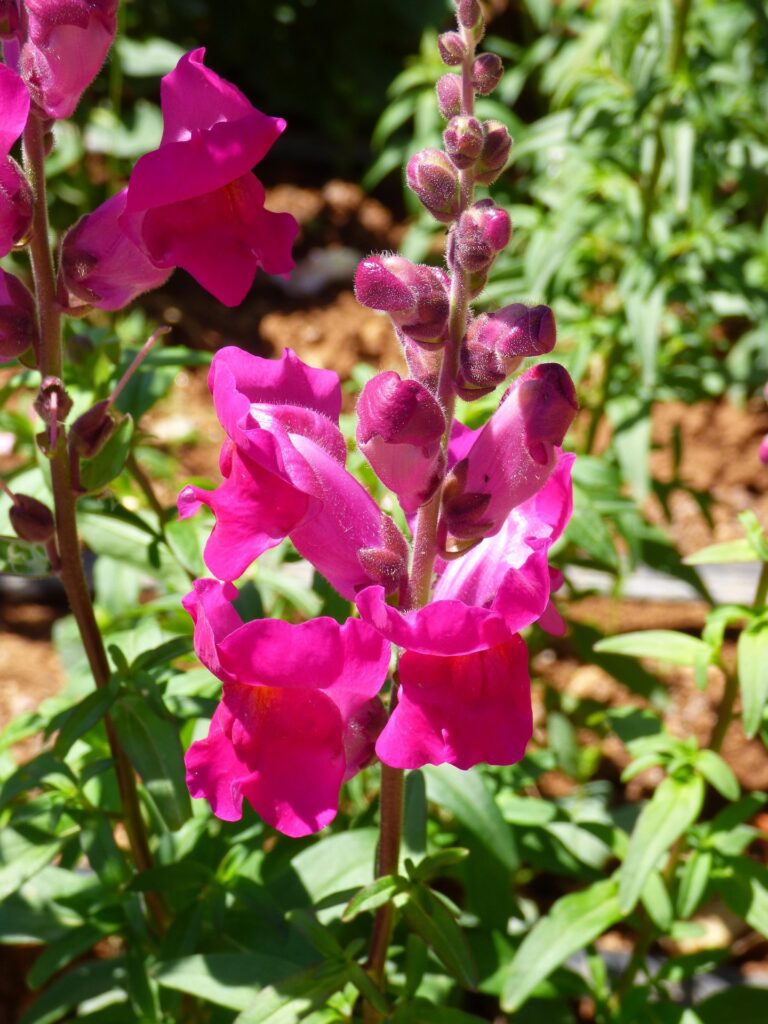
Caring for Snapdragons 🌞
Watering
- Keep soil evenly moist, especially during dry weather.
- Water at the base to prevent fungal diseases on leaves.
Fertilizing
- Use a balanced fertilizer (10-10-10) every 4–6 weeks.
- Avoid high nitrogen, which leads to lush foliage but fewer flowers.
Mulching
- Add mulch to retain soil moisture and suppress weeds.
Deadheading
- Regularly remove spent blooms to encourage continuous flowering.
- Pinch back stems after the first flush to promote branching and more blossoms.
Pruning and Maintenance ✂️
- Pinching: When plants are young (6 inches tall), pinch back the top growth to encourage bushy plants.
- Cutting back: After the first bloom cycle, trim plants by one-third to encourage a second bloom in fall.
- Staking: Tall varieties may need light support to prevent flopping.
Common Pests and Problems 🐛
- Aphids: Small insects that feed on sap; treat with insecticidal soap or neem oil.
- Rust: A fungal disease causing orange spots on leaves; remove infected foliage and improve airflow.
- Powdery Mildew: White, powdery coating; avoid overhead watering.
- Slugs and Snails: Often feed on seedlings; use barriers or traps.
Propagation of Snapdragons 🌱
1. Seeds
- Collect seeds from dried flower pods at the end of the season.
- Store in a cool, dry place and sow next season.
2. Cuttings
- Take 3–4 inch cuttings from non-flowering shoots.
- Root in moist soil or water until roots appear.
3. Self-Seeding
- In mild climates, snapdragons may self-seed and return the next year.
Seasonal Care Calendar 📅
- Spring: Sow seeds indoors, transplant seedlings, pinch young plants.
- Summer: Water regularly, deadhead blooms, mulch to retain moisture.
- Fall: Trim back after summer bloom for a second flush of flowers.
- Winter: In mild zones, mulch for protection; in cold zones, collect seeds and plan for next spring.
Expert Tips for Success 🌟
- Start seeds indoors early for a head start on the growing season.
- Pinch young plants to make them fuller and bushier.
- Water at the base, not overhead, to prevent disease.
- Plant tall varieties in the back of beds for vertical drama.
- Grow a mix of colors for cheerful, cottage-garden vibes.
FAQs About Snapdragons ❓
1. Are snapdragons annuals or perennials?
Snapdragons are tender perennials in warm climates but are usually grown as annuals in cooler regions.
2. Do snapdragons need full sun?
Yes, they bloom best with 6+ hours of sunlight, though in hot climates they enjoy some afternoon shade.
3. Can snapdragons grow in pots?
Absolutely! Dwarf and medium varieties thrive in containers, especially on sunny patios.
4. How long do snapdragons bloom?
They flower from spring to early summer, and with good care, many varieties bloom again in fall.
5. Why are my snapdragons wilting?
Overwatering or poor drainage often cause root rot. Ensure well-draining soil.
6. Are snapdragons poisonous?
Snapdragons are considered non-toxic to pets and people, making them safe for family gardens.
7. How tall do snapdragons get?
Depending on the variety, anywhere from 6 inches (dwarf) to 3 feet (tall varieties).
Conclusion: A Flower with Playful Charm 🌺
Snapdragons combine childlike wonder with garden elegance. Their playful dragon-mouthed blooms and rich colors brighten any space, from window boxes to borders. Easy to grow, cool-weather resilient, and loved by pollinators, they’re a perfect choice for gardeners at any level.
By giving them the right conditions—sun, moderate water, and a little pinch here and there—you’ll enjoy wave after wave of blooms. This season, add snapdragons to your garden and let their charming flowers bring joy to every glance.

